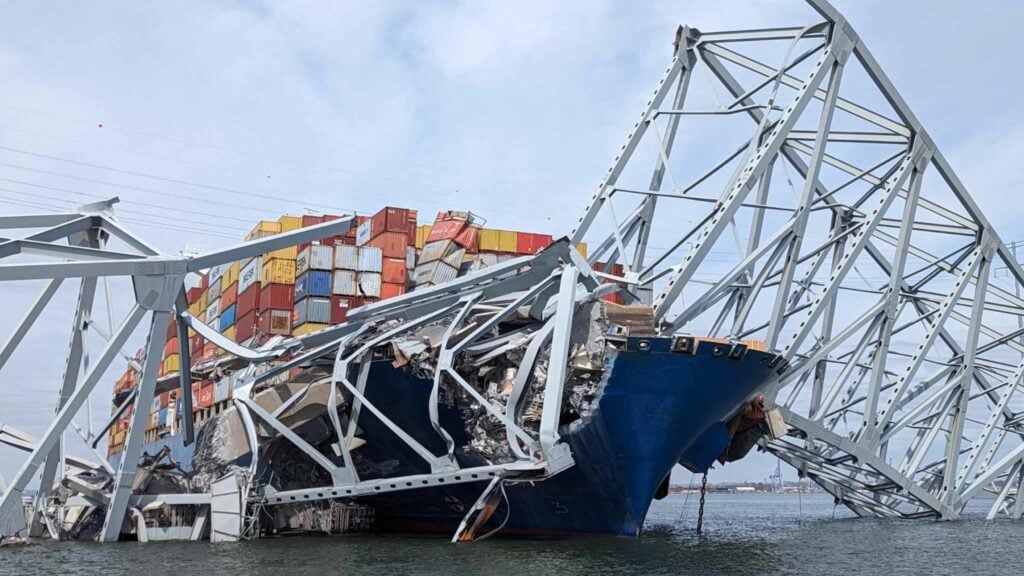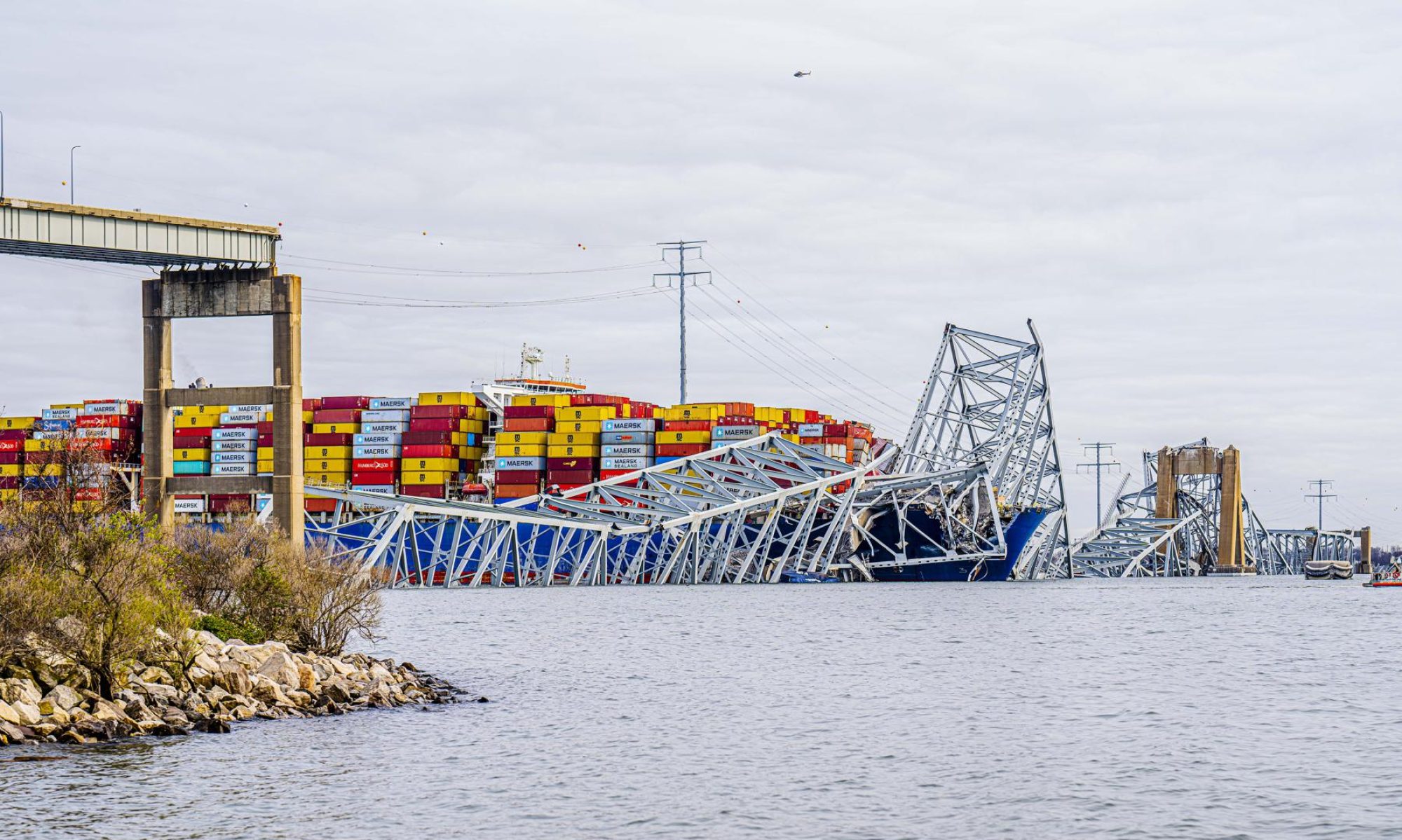On the 26th of March, 2024, the container ship MV Dali lost power and struck a pier of the Francis Scott Key Bridge in Baltimore, MD, causing the catastrophic collapse of the three central spans of the bridge. The tragedy cost six construction workers their lives, and caused a temporary closure of the Port of Baltimore as well as the loss of a major interstate thoroughfare for commercial and commuter traffic. It was a shocking reminder of the fragility of the engineering marvels we so often consider indestructible. In the months since, many questions have been asked about the events leading to the collapse and what could have been done to prevent them. However, the question we find to be among the most pressing is, “Just how likely was this accident to occur?”
The MV Dali was 984 ft. long, and while ships of such immense size are commonplace in today’s shipping lanes, the largest ships in 1977 when the Key Bridge was built, were less than three times smaller. Not only has the size of the ships that frequent our waterways increased tremendously, but the number of ships in those waterways has grown at an incredible rate as international trade has exploded in recent decades. This is compounded with the fact that bridges, like the Key Bridge, designed and built prior to the 1990s were not required to account for the force of a ship collision. Even modern design standards may underestimate the probability of a collision occurring and the force imposed on the bridge during such a collision.

On their own, these factors raise serious concerns about the ability of our current bridge infrastructure to survive collisions from such massive modern vessels. To make matters worse, empirical evidence suggests that bridge collapse due to ship collisions is far more likely than intended. Between 1960 – 2011, 17 major bridge collapses due to vessel collisions occurred in the US alone [1], putting the probability of collapse of at least one bridge at a little over 30% per year. In other words, the frequency of bridge collapses due to ship collisions in the U.S. is approximately one every 2½ years. Considering that the American Association of State Highway and Transportation Officials (AASHTO) Bridge Design Specifications stipulate that the frequency of bridge collapse from ship collision should be 10,000 years for critical bridges and 1,000 years for all other bridges, we are clearly falling far short of meeting expectations.
Based on these observations, we hypothesize that:
The probability of a collision event of this magnitude somewhere in the United States is much higher than intended by current design codes and standards.
The risk of the Key Bridge collapse was systematically underestimated due to the underestimation of the probability of occurrence, and
The goal of our National Science Foundation funded Rapid Response (RAPID) project is to test these hypotheses using empirical ship tracking data, made publicly available by the United States Coast Guard and maintained jointly by the National Ocean and Atmospheric Administration (NOAA) and the Bureau of Ocean Energy Management (BOEM). Using this data, we aim to estimate the probability of large vessels aberrating from their course near a major US bridge, which we can then combine with estimates of shipping traffic in major U.S. ports and near critical bridges, further allowing the estimation of collision probabilities for the Key Bridge and other critical bridges in the US.
With the ultimate goal of assessing risk to critical bridge infrastructure nation-wide, we specifically aim to answer the following research questions:
- What is the actual probability that a ship the size of the Dali would aberrate from its path and collide with the pier of the Key Bridge?
- What does this individual event probability tell us about the larger probability of similar bridge collisions across the Strategic Highway Network (STRAHNET) infrastructure?
- Given the existing data sources and their uncertainties, how confident can we be in these probabilities?
- Are these probabilities sufficiently small that the loss of life risk and economic loss risk are acceptable, or have we unknowingly underestimated risk by underestimating the probability of collision and, ultimately, the probability of failure of critical US bridges?
By answering these questions, we hope to provide actionable insights into ship collision risk that can inform more detailed strategic risk analysis for potentially vulnerable bridges, and ultimately guide informed decision making practices for the retrofit and protections of existing bridges and the design of future bridges.
REFERENCES:
[1] Chen, W.-F. and Duan, L. (Eds.); Bridge Engineering Handbook: Substructure Design. CRC Press, 2014

